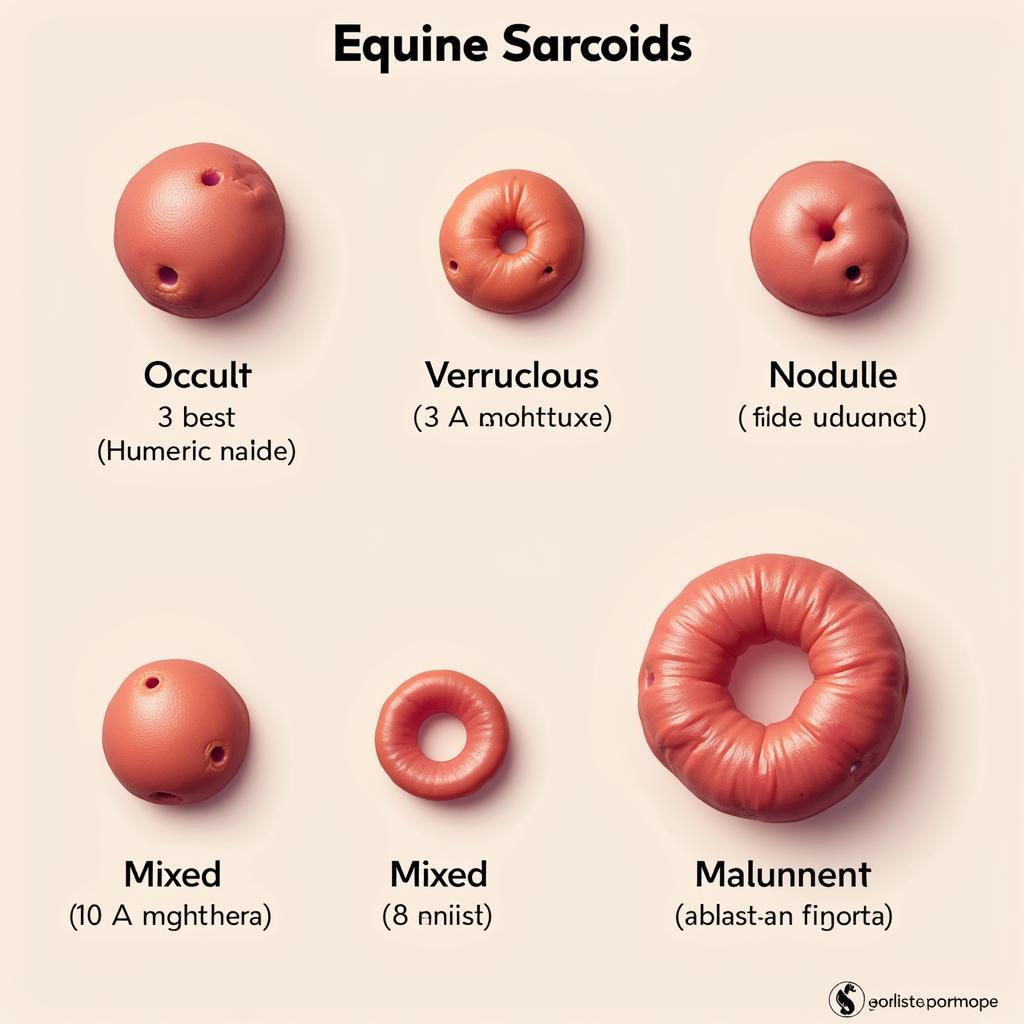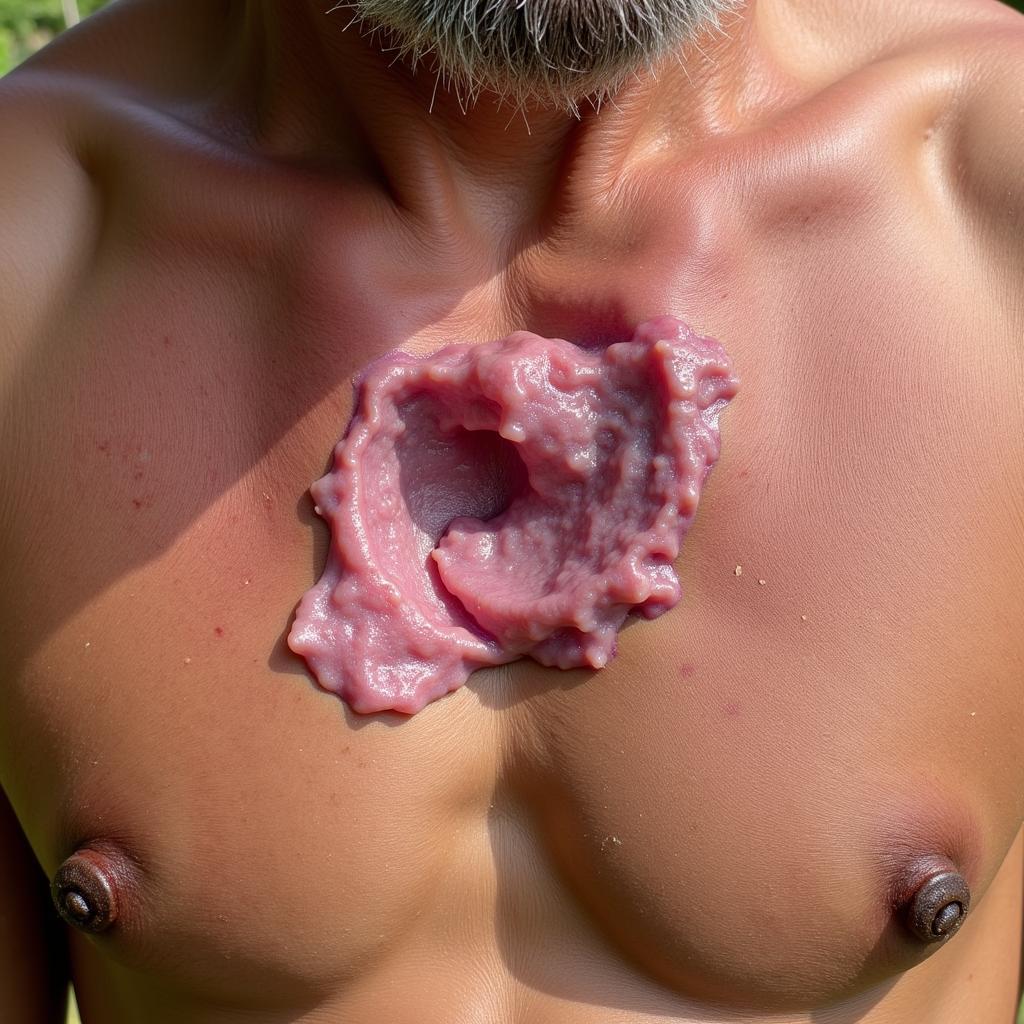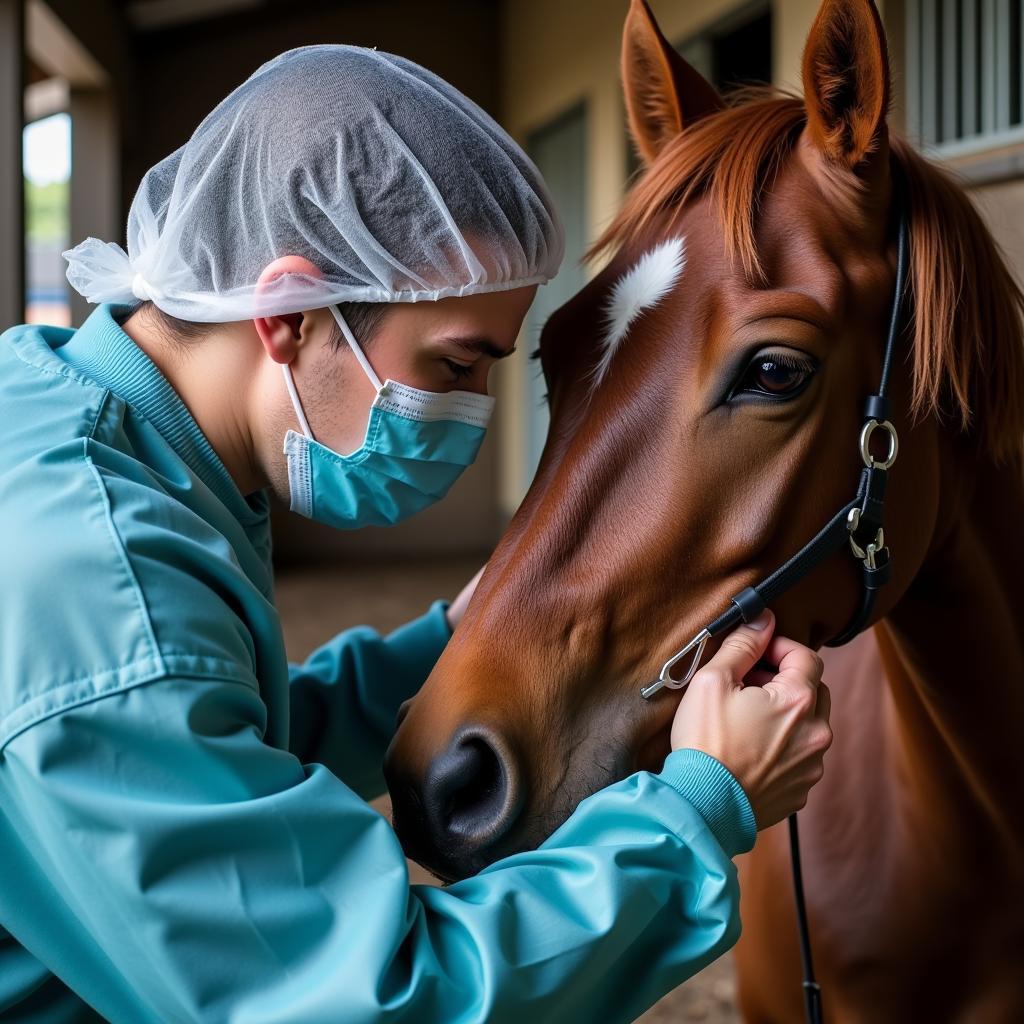Sarcoids are the most common skin tumors found in horses. While they are benign and don’t spread to other organs, sarcoids can be locally invasive and aggressive. Understanding what sarcoids look like, the different types, and treatment options is essential for any horse owner.
 Types of Equine Sarcoids
Types of Equine Sarcoids
What do Sarcoids in Horses Look Like?
Sarcoids can appear in various forms, making them tricky to identify. Early detection is crucial for successful treatment. Here’s what to look for:
- Raised Nodules: Small, firm, and rounded lumps beneath the skin.
- Warty Growths: Grayish-white, cauliflower-like lesions on the skin’s surface.
- Hairless Patches: Areas of alopecia, where the sarcoid inhibits hair growth.
- Ulcerations: Open sores that may bleed or ooze, often occurring in later stages.
- Location: While they can appear anywhere, sarcoids are frequently found in areas where the skin is thin or rubs together, such as the head, groin, eyelids, legs, and under the saddle area.
Types of Sarcoids
Veterinarians classify sarcoids into six main types:
-
Occult Sarcoids: Flat, scaly areas that appear almost hairless. Often mistaken for ringworm or other skin conditions.
-
Verrucous Sarcoids: Wart-like growths with a dry, crusty surface.
-
Nodular Sarcoids: Firm, round masses under the skin, sometimes appearing in clusters.
-
Fibroblastic Sarcoids: Aggressive, fleshy tumors that grow rapidly and may ulcerate.
-
Mixed Sarcoids: Combine characteristics of two or more types.
-
Malignant Sarcoids: Rare but most aggressive form, capable of invading surrounding tissue and spreading.
 Sarcoid on Horse Chest
Sarcoid on Horse Chest
What Causes Sarcoids in Horses?
Research suggests that the bovine papillomavirus (BPV) plays a significant role in sarcoid development. Horses become infected through direct contact with infected animals or contaminated tack and equipment. While BPV exposure is common, not all horses develop sarcoids. Factors like genetics, immune system function, and environmental stressors may influence susceptibility.
"While we don't fully understand why some horses develop sarcoids and others don't, we do know that early detection and treatment significantly improve the outcome," says Dr. Emily Carter, a leading equine veterinarian specializing in dermatology.Diagnosis and Treatment of Sarcoids
If you suspect your horse has a sarcoid, consult your veterinarian for a proper diagnosis. They’ll likely perform a physical examination and may recommend a biopsy to confirm the diagnosis and rule out other skin conditions.
Treatment for sarcoids varies depending on factors like:
- Type and Size: Small, occult sarcoids might not require treatment, while larger, more aggressive types need immediate attention.
- Location: Sarcoids in challenging areas like the eyelids or groin might need specialized approaches.
- Horse’s Age and Health: Treatment options are tailored to the individual horse.
Common Treatment Options Include:
-
Surgical Removal: Effective for small, well-defined sarcoids, but carries the risk of recurrence.
-
Cryotherapy: Freezing the sarcoid using liquid nitrogen.
-
Chemotherapy: Topical or injected medications to kill cancerous cells.
-
Immunotherapy: Stimulating the horse’s immune system to fight the sarcoid.
-
Radiation Therapy: Using high-energy rays to destroy tumor cells, often used for difficult-to-treat cases.
 Veterinarian Diagnosing Sarcoid
Veterinarian Diagnosing Sarcoid
Prevention Tips
While there’s no guaranteed way to prevent sarcoids, you can minimize the risk by:
-
Maintaining Good Hygiene: Regularly clean and disinfect tack, grooming supplies, and stable equipment.
-
Minimizing Stress: Provide a low-stress environment for your horse with proper nutrition, exercise, and socialization.
-
Monitoring for Changes: Regularly inspect your horse’s skin for any unusual growths or lesions, and report any concerns to your veterinarian promptly.
Seeking Expert Advice
Early detection and prompt veterinary attention are vital for managing sarcoids in horses. If you notice any suspicious skin lesions on your horse, don’t hesitate to contact your veterinarian. Remember, with proper care and treatment, most horses with sarcoids can live happy and healthy lives.
For immediate assistance with potential sarcoid concerns in your horse, please contact Justus Horses USA at:
Phone: 0772127271
Email: [email protected]
Address: QGM2+WX2, Vị Trung, Vị Thuỷ, Hậu Giang, Việt Nam
Our dedicated team of equine professionals is available 24/7 to address your questions and provide expert guidance.